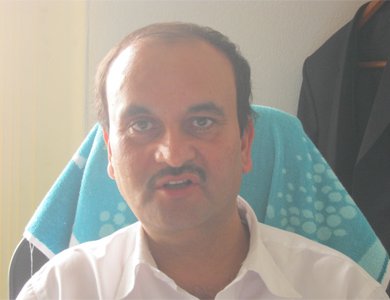
How do you see the weakness of teacher training?
One of the weaknesses of teacher training is that it is too conservative. There requires over Rs. 4 billion to change the present teaching methodology. Norms of spending budget in Ministry of Education is more conservative than other ministries. There requires an additional Rs.4 billion to update the norms. For example, there is same norms applied in School Leaving Certificate throughout the country. How can a norm which is applied in an accessible area be applied to remote areas. There is the need to update this kind of norms. Ministry of Finance has to allocate us additional fund to change this.
How do you see the level of investment in schools?
For instance, the investment in primary level is lower in terms of international standards. We are spending about Rs.12000.00 for a primary school children. How can we expect a quality education in such a low investment. We need to develop minimum standard of management committee and performance of the teachers. There is the need of a huge cost for improvement of quality. The easiest way to make the change and improve the quality is through empowering the community with accountability.
Does the Ministry follow norms to allocate funds for schools?
In developed countries, there are civil registration system, which includes the number of families in each households. Under this norm, the schools and teachers are allocated particular areas. However, there is no adequate linkage between schools, local bodies and vital registration data. In our country, the situation is different as the quota of schools and teachers are allocated without long term plan and vision. We need to develop downward accountability measures to improve the situation.
What is the number of schools?
There are 34298 schools. Out of 29,000 schools, there are 8416 government high schools, 14447 middle schools and remaining are primary schools. There are 5298 private schools.
What is the number of school teachers?
There are 107,000 permanent teachers. Now, 13,000 permanent teachers will be added. There are 14 different kinds of teachers. The teachers recruited and supported by local bodies are not included. If we want to improve the quality of education, we need to have further 20,000 teachers.
We have provided all kinds of facilities to the teachers as per with civil servants but we are yet to use the teachers properly. There involves a lot of political pressure even in the transfer of primary teachers.
Is there any difference in per student costs?
Yes, it varies from district to district, and it depends upon the student teacher ratio and cost index. If there are more private schools, the number of students is lower in comparable government schools. Higher the numbers of private schools, lesser the pressure of students in government schools. However, in remote parts of Nepal, the numbers of private schools are lower and students in government schools are higher.
On what basis the number of schools added annually?
The numbers of schools increase on the incremental basis. Now we are making efforts to rationalize the process.
How can you make a difference between government and community schools?
Among government schools, community schools are comparatively more disciplined and their quality is also higher than other schools. Studies have shown that the more the investment, the more disciplined and higher the quality of education. There is the need to increase the community schools to enhance the quality of education in rural parts of Nepal. Otherwise, poor people of Nepal rarely get opportunity to acquire quality education. The government needs to increase the number of community schools.
What is your impression about education system in Nepal?
The situation is very complex in education sector. We do a lot of policy intervention at the center but we rarely look at the implementation side. Instead of brining new policies, there is the need to build a strong mechanism to monitor the implementation. We have increased the number of schools on incremental basis and now we are rationalizing it. It is very difficult task.
Don’t you think the investment in education needs to increase?
Our per capita investment in school education is lower in comparison to international standards. The investment in private schools is comparatively higher than the government schools. Only after the increment of investment, government schools may also compete with private schools. Per student investment in private school is much higher than government schools. Average investment for the student in going to private school is 400 dollars.
How much money is the government spending annually in education sector?
Ministry proposes additional Rs.26 billion coming budget. There is annual increment of education budget at an average 15 percent per annum. Ministry has requested 20 percent increase this year. Out of the total budget, most of the money goes for salary, pension and other things. There is very nominal budget for infrastructure development and training. More than Rs. 5 billion goes for teachers pension annually and it is increasing trend.
How much budget Ministry require?
The government needs to double the annual budget to improve the quality of education. To improve the quality of education, there is the need to increase quality of teachers, logistic and others. There also need to define standards as well as brining new teaching method.
How do you view the beruju at the Ministry of Education?
There are also huge amounts of unsettled (Beruju) account, in education sector. Out of Rs.8 billion, the Ministry has already settled Rs.3 billion in just this fiscal year. I am making efforts to reduce it.
- TANAHU HYDROPOWER PROEJCT: A Significant Achievement
- Apr 15, 2024
- AMBASSADOR HANAN GODAR: Sharing Pain With A Nepali Family
- Mar 30, 2024
- VISIT OF KfW AND EIB TO NEPAL : Mission Matters
- Mar 25, 2024
- NEPAL BRITAIN SOCIETY: Pratima Pande's Leadership
- Mar 24, 2024
- NEPAL ARMY DAY: Time To Recall Glory
- Mar 15, 2024
















